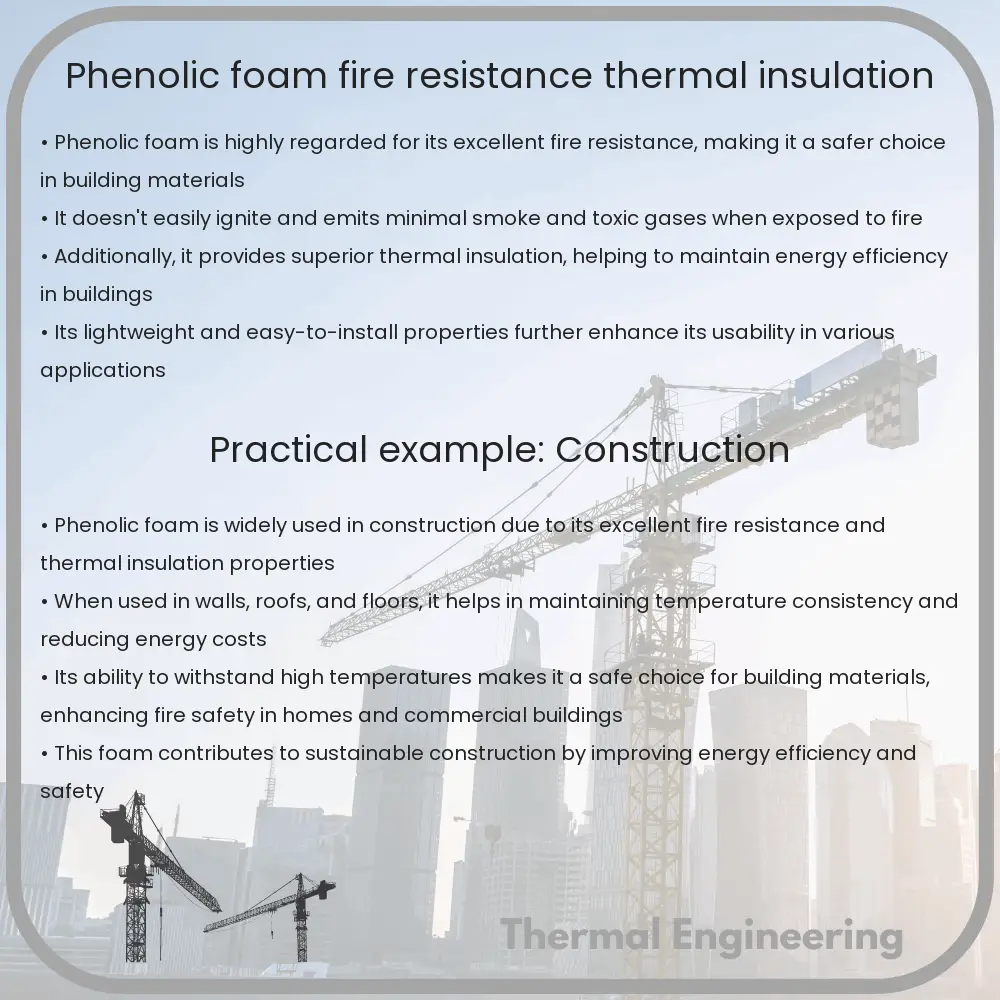Phenolic foam is a fire-resistant, thermally insulating rigid polymeric foam used in construction, known for safety and energy efficiency.

Introduction to Phenolic Foam
Phenolic foam is a type of rigid polymeric foam that comprises phenolic resin and a foaming agent. Known for its excellent fire resistance and thermal insulation properties, it is widely used in the building and construction industry. This material not only offers safety benefits but also contributes to energy efficiency in various applications.
Fire Resistance Properties
One of the standout features of phenolic foam is its inherent fire resistance. Unlike many other insulation materials, phenolic foam does not contribute significantly to the spread of flames or the development of smoke. When exposed to fire, the foam carbonizes and expands, forming a charred layer that helps to protect the core of the foam and slow down the spread of fire. This characteristic makes it an ideal choice for applications where fire safety is a paramount concern.
- Low Smoke Emissions: Phenolic foam generates very little smoke when burned.
- Low Toxicity: The smoke produced is typically less toxic compared to other insulation materials.
- High Ignition Temperature: It has a higher ignition temperature than many other foams, reducing the risk of accidental fires.
Thermal Insulation Capabilities
The thermal insulation performance of phenolic foam is superior to many commonly used insulation materials. It has a low thermal conductivity (usually around 0.020 W/mK), which means it is more effective in preventing heat transfer. This property is particularly important in the design of energy-efficient buildings, as it helps to reduce heating and cooling demands, thereby lowering energy costs.
- Energy Efficiency: Helps in maintaining consistent indoor temperatures and reducing energy costs.
- Moisture Resistance: Phenolic foam is also resistant to moisture absorption, which helps to maintain its insulating effectiveness over time.
- Longevity: It is durable and maintains its performance characteristics for a long period.
Applications of Phenolic Foam
Due to its impressive properties, phenolic foam is used in a wide range of applications:
- Building insulation for walls, roofs, and floors in residential, commercial, and industrial buildings.
- Fire doors and fire protective panels, where additional fire resistance is required.
- HVAC systems to insulate ducts and prevent heat loss or gain, improving energy efficiency.
- Pipework, particularly in industries where maintaining the temperature of fluids is crucial.
- Transportation, for insulating carriages in trains and other vehicle components where fire safety and thermal management are important.
Environmental Considerations
Phenolic foam, while beneficial in many ways, must also be considered in terms of environmental impact. It is generally more environmentally friendly compared to some traditional insulation materials due to its longevity and energy-saving potential. However, the production of phenolic resin involves formaldehyde, a volatile organic compound (VOC), which raises concerns regarding environmental and health safety. Advances in manufacturing technologies are aiming to reduce these emissions and increase the material’s eco-friendliness.
Conclusion
In summary, phenolic foam is an advanced insulation material that offers remarkable fire resistance and superior thermal insulation properties. Its use across various sectors demonstrates not only its effectiveness in enhancing safety and reducing energy consumption but also its adaptability to different environments and requirements. As technology advances, further improvements in phenolic foam will likely enhance its performance and environmental profile, solidifying its role in the future of insulation materials.